Drought Tolerant Plants That Don’t Need Water (Or Very Little Water)
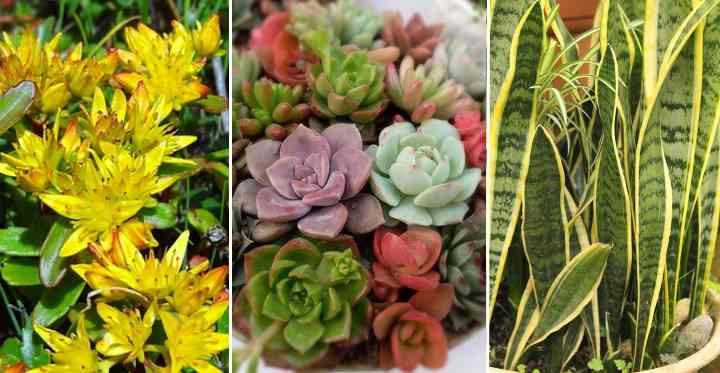
Drought tolerant plants are ideal for keeping your yard looking green and colorful even in dry, arid climates. Many plants don’t need a lot of water and can even thrive on neglect. You can find aesthetic low-water plants that are excellent for ornamental gardens, rock gardens, or as flowering border or landscape plants. If you are the forgetful type, then you can look for indoor plants that need little water and care.
What are the best types of drought-tolerant plants?
These outdoor plants can survive a long time without water and in neglect (even in dry landscapes):
- Black-eyed Susan
- Verbena
- Lavender plant
- Cosmos plants
- Coneflowers
- Stonecrops
- Blanket flowers
- Flowering globe thistles
- Bougainvillea shrub
- Yarrow
If you need a suitable houseplant that only needs watering occasionally, then choose a sansevieria (snake plant), a spider plant, ZZ plant, or any type of succulent.
In this article, you will find out the top outdoor plants that survive in high heat and little water. At the end of the article, you will find out about low-water indoor plants that require minimal care.
Types of Drought Tolerant Plants
Low-water garden and indoor plants have certain features that minimize water loss and maximize moisture absorption:
- Some plants that hardly need any water have broad leaves with deep lobes around the edges to reduce leaf area.
- Types of succulents or desert plants have thick waxy leaves that store moisture within the plant.
- You might notice that some drought-resistant plants have furry leaves to trap moisture.
- Other low maintenance aesthetic plants thrive in hot arid landscapes because they have deep roots that absorb moisture.
The Best Drought Tolerant Plants (With Pictures)
There are many reasons to choose drought-resistant varieties of plants for your yard. You might want to find “thrifty” plants to conserve water and cut costs. Drought tolerant perennials keep your garden looking beautiful even if the ground is dry and inhospitable. Or, you might want to have plenty of green foliage and colorful flowers without the hassle of watering your yard every day.
Whatever your reason for wanting plants with low water requirements, you will find one on this list to suit your needs.
Bougainvillea
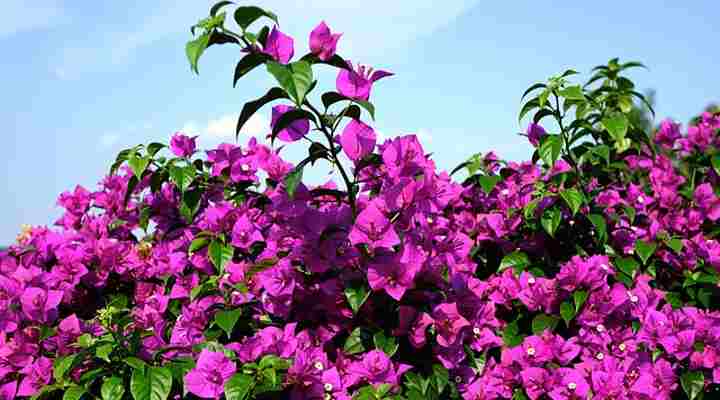
Bougainvillea is one of the best drought tolerant flowering shrubs that can survive in low-water conditions. These low maintenance ornamental perennial shrubs are popular in hot climates such as Florida, Texas, California, and the Mediterranean.
Bougainvillea plants produce a multitude of brightly-colored flowers that seem to cover the shrub. These papery blossoms can be bright pink, deep magenta, purple, red, white, or golden yellow. Even in the driest of conditions, you can still have stunning flowers to brighten up a sparse, parched landscape where little else can survive.
Black-Eyed Susan (Rudbeckia)
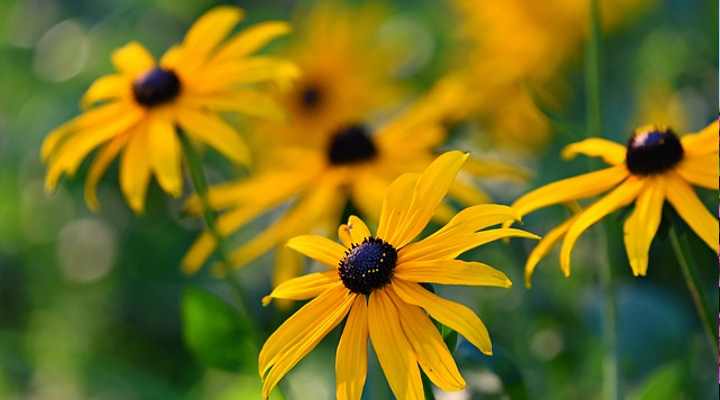
Black-eyed Susans are plants that have few needs when it comes to water and will fill your garden with sun-bright yellow colors. Black-eyed Susans can grow as drought-resistant perennials or annuals. They have yellow daisy-like flowers with a black center—hence the name ‘black-eyed Susan.’
These plants grow to between 12” and 39” (30 – 100 cm) tall. The green foliage is covered in coarse hairs that help trap moisture and the plants flower even in drought conditions.
Blanket Flower (Gaillardia)
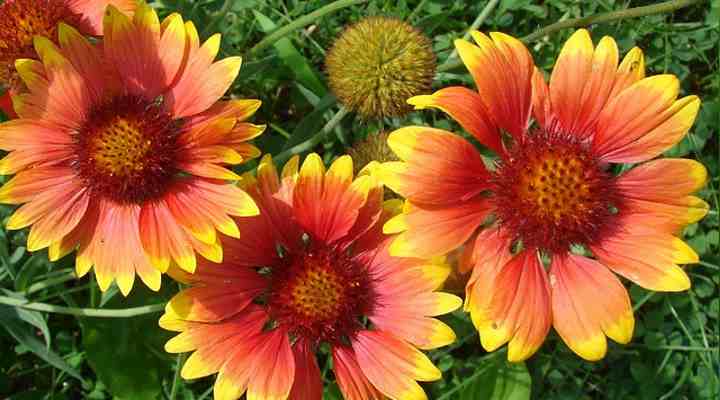
Blanket flowers can survive with only occasional watering and don’t mind when the weather gets sweltering. These low maintenance aesthetic perennials thrive in full sun when planted in well-drained soil. Blanket flowers get their name because their bright red, orange, and yellow colors resemble traditional blankets made by Native Americans.
The blanket flower plant grows as a full-sun perennial in hot climates and as a flowering annual in temperate climates.
Verbena
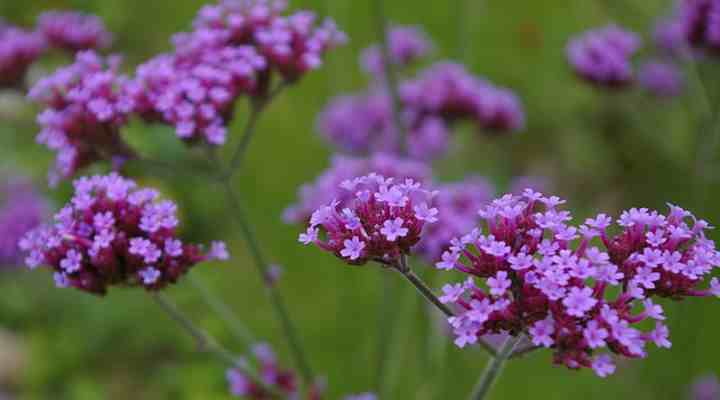
If you are looking for drought-resistant ground cover plants that thrive in full sun, then verbena is an excellent choice. The dark green foliage contrasts with the beautiful clusters of pink, white, and purple flowers. Even in a dehydrated garden and blazing sun, verbena continues to flower right up until late fall.
The trailing stems make verbena an excellent low-water plant for hanging baskets. You can hang these flowering plants on a sunny balcony, porch, or deck area and only water them once in a while.
Yarrow (Achillea millefolium)

Yarrow is a heat and drought tolerant plant that has few watering requirements. The herbaceous plant, with its clusters of brilliant white or reddish-orange flowers, grows well in dry areas as well as damp patches of ground. These perennials have spreading roots and hairy stems to help survive in conditions when there has been little rain.
Even with some neglect, yarrow will not wither and die but will continue to flower throughout hot summers.
Lantana

Lantana is a plant native to hot countries such as India and Australia and grows well despite drought and intense heat. You can plant lantana flowers in a sunny spot in your yard and only water it rarely. In warm climates, these flowers bloom all year long. These attractive blossoms can be a mix of orange, yellow, red, purple, and white.
You can plant lantana in your yard if it has dry, sandy soil. However, the plant grows in most soil types as long as it’s well-draining. The brightly-colored flowers attract honeybees and butterflies.
Oleander (Nerium)
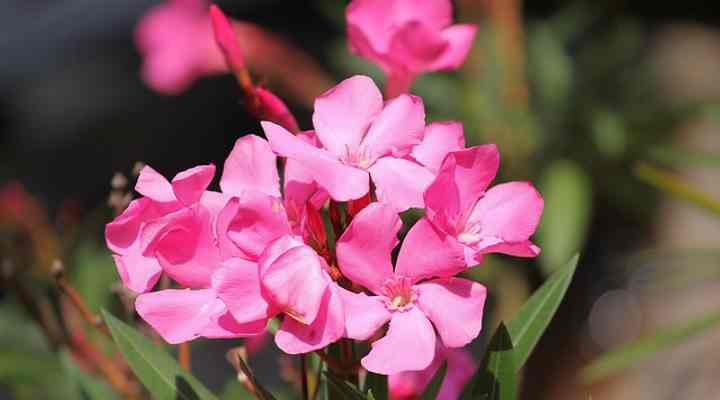
Oleander is a plant that is native to dry, tropical regions of the world, and so it’s no surprise that it loves heat and drought. These low-water flowering shrubs don’t need much water to survive. Flowers on this drought-resistant shrub can be any shade from white to pink to red. You can enjoy the sweet scent of the flowers on hot, sunny days.
Oleander is tolerant of poor soil and intense heat. It can even survive a long period of drought. However, a word of warning—oleander is toxic to humans, cats, dogs, and other animals.
Sage (Salvia)

Sage is a flowering shrubby herb that grows well even in dry, hot, waterless conditions. This woody herb can grow as a sun-loving, drought-resistant annual or perennial. You will also notice that the leaves are fuzzy which helps the herbaceous plant survive for weeks without water.
Sage is famous for its distinctive aroma. Many species of sage also produce flowers in the shape of long colorful cones. Some outstanding varieties are white sage, red flowering sage, blue wine sage, and candelabrum sage with violet flowers.
Lavender (Lavendula)
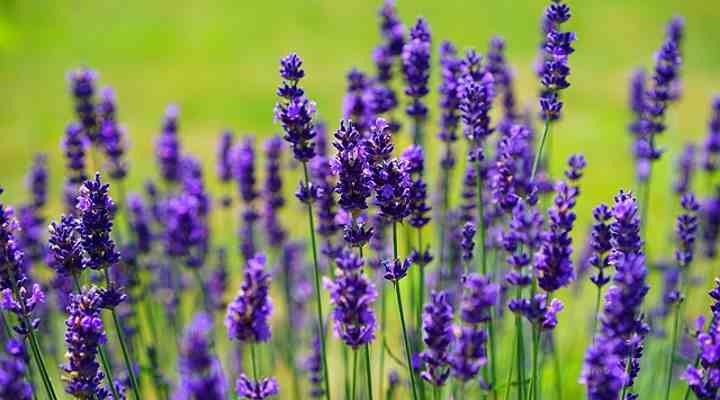
Lavender is another popular flowering herb that thrives in drought-prone, arid landscapes. These small perennial shrubs love high heat, only rarely need water and can thrive even in neglect. You can add lavender to your sunny garden as a colorful border plant that gives off relaxing lavender aromas.
The blue-purple flowers appear at the end of long stems that are taller than the shrub. You can plant these drought-resistant plants, neglect them, and they will still flower year after year.
Stonecrops (Sedum)
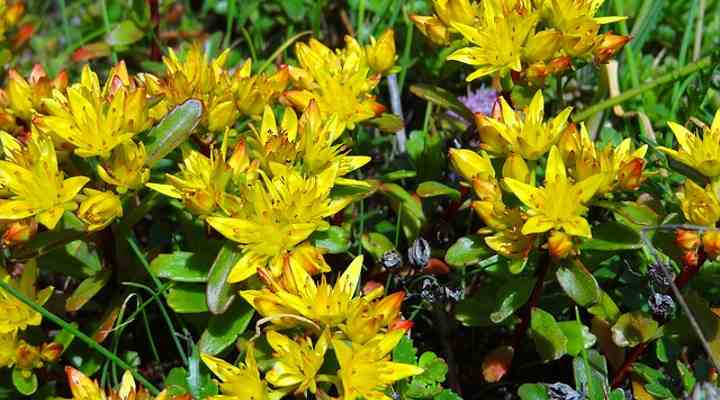
There are hundreds of species of stonecrop flowering plants that need minimal watering, even during hot summers. These sun-loving plants have leaves that store water—even watering less than once a week won’t harm them too much. The succulent leaves almost disappear when large clusters of flowers appear.
You can plant stonecrops in your yard that has well-draining soil or even as part of a rock garden.
Bugleweed (Ajuga)
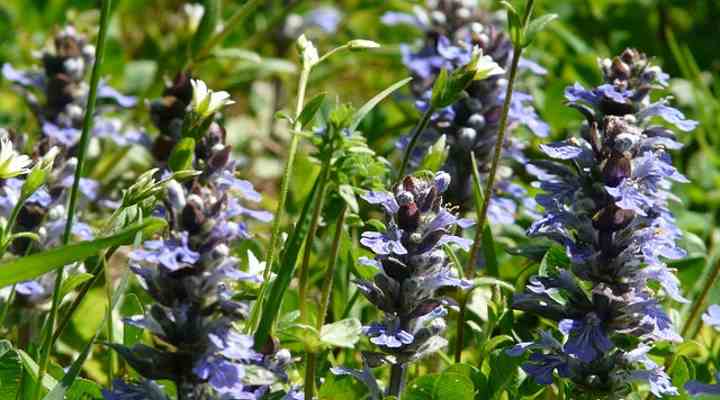
Bugleweed will survive even in the harshest of condition when moisture is low and there is plenty of heat. This herbaceous flowering plant from the mint family is an excellent drought-loving ground cover plant for full sun. Its attractive blue spiky flowers and interesting leaves are reasons why some gardeners choose this for a low-maintenance outdoor plant.
As its common name suggests, this “weed” can become invasive and take over gardens if not controlled.
Butterfly Weed (Asclepias Tuberosa)
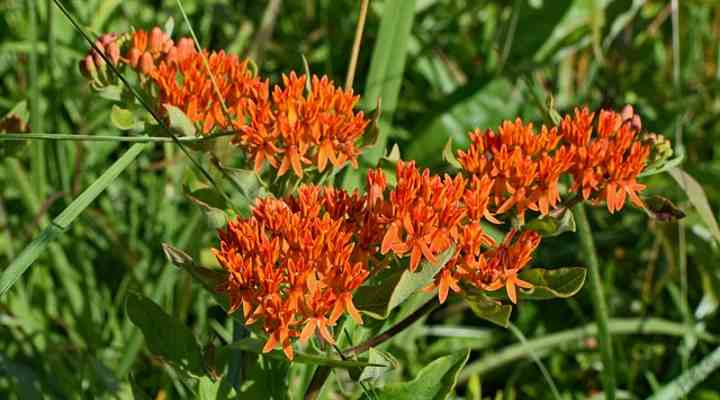
Butterfly weed is a drought-tolerant perennial that grows well despite hot conditions. Luscious green foliage and orange flowers don’t wilt just because the ground is bone dry and it’s sunny. This plant needs full sun to survive and, although it can grow beside streams, it can grow just as well in dry, sandy soil.
Plant butterfly weed if you want to attract pollinators such as butterflies, honeybees, and other insects.
Coneflowers (Echinacea)

Coneflowers have large, showy flowers and grow in dry grasslands that are deprived of water. These herbaceous, easy-going perennials grow up to 4 ft. (1.4 m) in height. The long stems are crowned with purple flowers in the shape of a disc. They will grow well even if you have sandy soil and forget to water them occasionally.
Their common name—coneflowers—comes from the way that the petals can droop down from the center to create a cone shape.
Cosmos Plants

Cosmos plants thrive in less-than-ideal conditions when they’re deprived of moisture. These perennial plants seem to produce more flowers the more you neglect them. Being of the same family—Asteraceae—as coneflowers, cosmos plants have pretty and aesthetic flowers with petals arranged around a central disc.
Growing well in dry sandy soil and full sun, you can water them occasionally to have a colorful garden.
Desert Rose (Adenium Obesum)
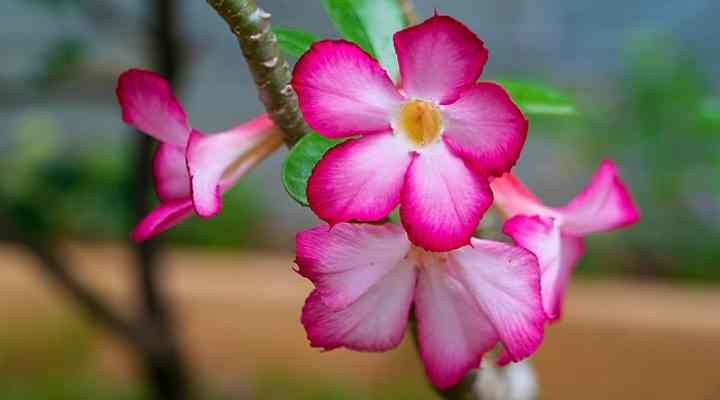
As this plant’s common name suggests, desert rose needs hot, dry conditions to survive. The flowering tropical plant is a type of succulent shrub native to Africa and the Arabian Peninsula. The thick green foliage contrasts with the delicate showy rose flowers. The stunning blooms are generally pink or red with a white center.
Don’t worry about watering a desert rose in your garden. It will usually draw enough moisture from any in the ground. In colder climates, the flowering shrub is deciduous—in arid climates, it’s evergreen.
Ornamental Onions (Allium caeruleum)
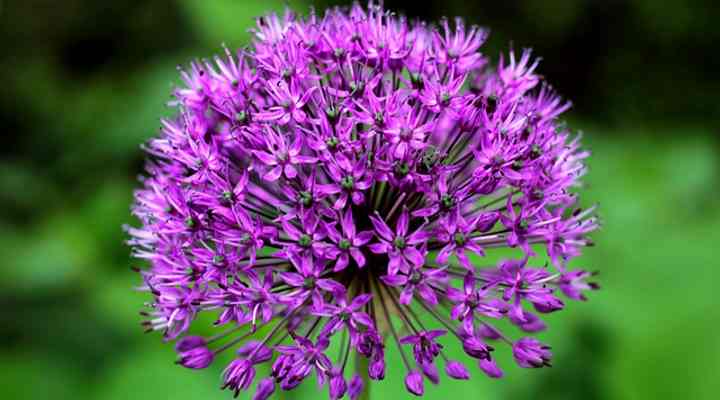
Native to waterless, parched climates in Central Asia, ornamental onions grow perfectly well if you only water them occasionally. These drought-resistant bulbous plants grow in clumps and produce showy globe-shaped purple flowers.
You can plant these in an organic vegetable garden as companion plants to ward off species of destructive flies and beetles.
Golden Marguerite (Cota tinctoria)
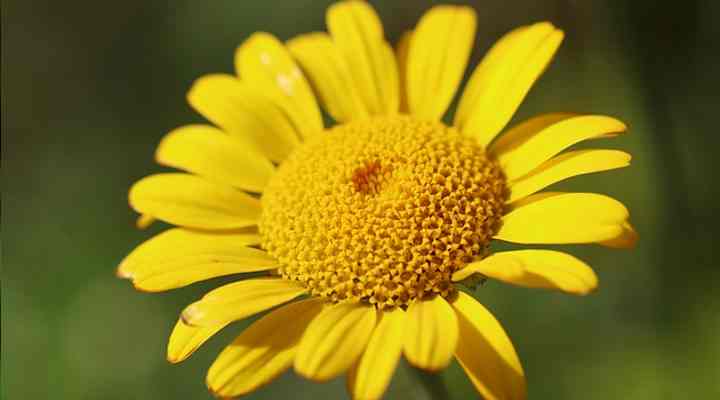
Like most plants in the sunflower family, golden Marguerite thrives in full sun and poor soil. Once the plant is established, it rarely needs watering and will turn your garden into a sea of bright yellow colors. Other names for this sun-loving biennial are Boston daisy, yellow chamomile, or dyer’s chamomile.
Marigolds (Tagetes)

With very little water and plenty of warm sunshine, marigolds still produce large, showy, colorful flowers. Their ability to withstand dry conditions comes from their long fibrous roots. These flowering, sun-loving annuals perform well in any type of soil and are well-tolerant of drought.
Plant marigolds as companion plants among vegetables to keep pests away. Tagetes plants are not to be confused with another drought-tolerant plant with the same common name Calendula—or, desert marigold.
Hardy Iceplant (Delosperma)
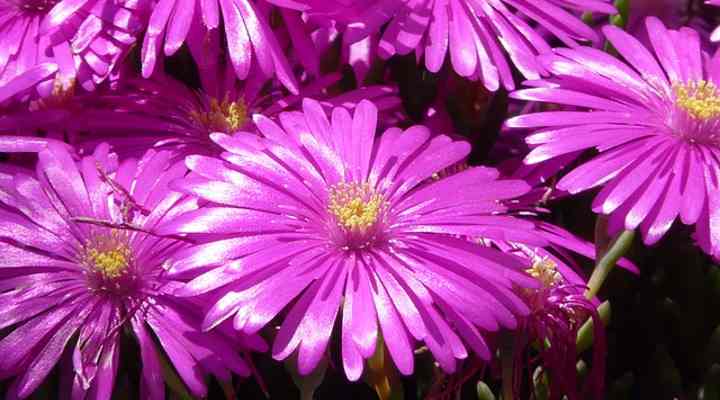
The Trailing Iceplant or Hardy Iceplant is a ground covering plant with fleshy leaves that need little care. Another common name for this perennial is pink carpet due to the abundance of small flowers that bloom from July to September. The drought-tolerant plant grows exceptionally well in arid, hot conditions.
Plant in your garden for ground cover where other plants can’t grow due to poor soil or full sun.
Pinks (Dianthus plumarius)
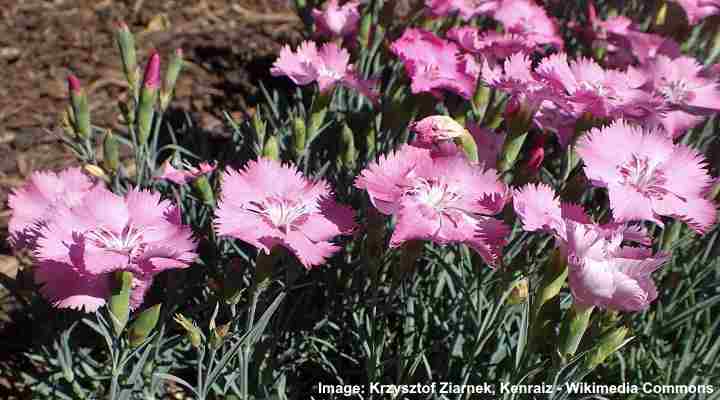
Pinks are a species of flowering shrub-like plant that create a bed of pink or purple flowers in summer. These plants grow well in full sun, and although they need watering, they can withstand short dry spells. The evergreen shrubs grow to between 12” and 24” (30 – 60 cm) and add plenty of color to your garden from late spring until late summer.
Globe Thistle (Echinops bannaticus)
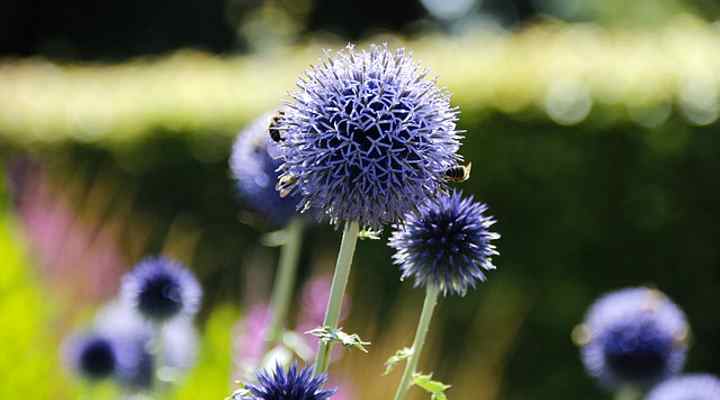
Globe thistles are one of the most interesting and unique drought-tolerant plants for your garden. Blue globular flowers grow on the end of long straight stems. The stems can grow as tall as 4 ft. (1.2 m). These sun lovers grow best in poor, dry soil and are tolerant of hot, humid summers. Only water occasionally during the growing season.
The Best Drought Tolerant Plants for Indoors
Low-water houseplants seem to grow better when you neglect them. Many tropical houseplants don’t grow well in soil that is too moist. Indoor plants that are easy to care for may only need occasional watering to grow well.
Let’s look at five of the best indoor plants that are not fussy when it comes to watering.
Sago Palm
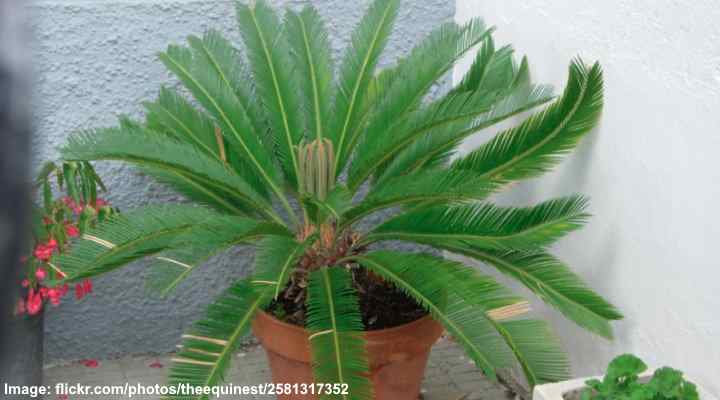
Sago palms are not thirsty plants and only need some watering when the soil dries out. When growing in a pot, their short statures and palm like branches bring the aesthetic of the tropics to your room. Place in a bright location and water occasionally to make sure the plant thrives.
Remember that sago palms are poisonous and should be kept away from cats, dogs, other pets, and children.
Sansevieria

Also called the snake plant, sansevieria seems to grow better the more you neglect it. Sansevierias have long succulent leaves and, being a desert plant, grows well in dry soil. The succulent leaves store water, so if you have a sansevieria growing in a pot, you only need to water it on rare occasions. There are many species of sansevieria to choose from that don’t need much care.
Spider Plant (Chlorophytum comosum)

Spider plants can last a week or longer without giving them any water. While it’s not great to completely neglect any houseplant, spider plants are quite forgiving when it comes to dry soil due to a lack of water. These cheery plants help brighten up the corner of any room with their variegated light green and white leaves. The long, tapered leaves grow upward and then cascade over the side of the pot—perfect for hanging baskets or on shelves.
ZZ Plant (Zamioculcas)
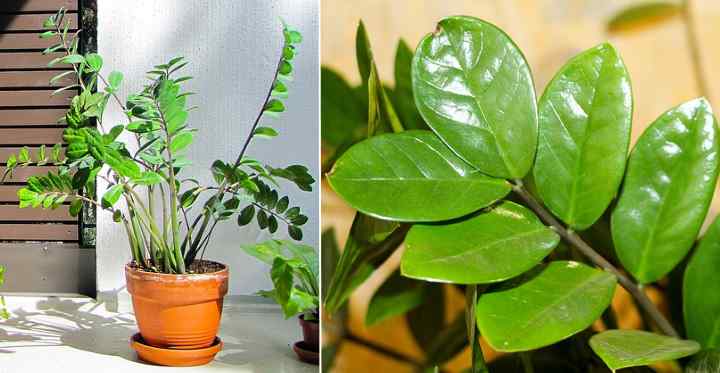
ZZ plants are true survivors and can withstand long periods of drought thanks to their large roots and succulent leaves. Also called Zanzibar gem or eternity plant, you never really have to water a ZZ plant apart from the odd occasion. Their glossy green foliage on thick stems can withstand temperatures up to 79°F (26°C). These evergreen hardy houseplants seem imperishable even in poor growing conditions.
Succulents

Most types of succulents can survive in hot, dry, arid conditions with a minimum amount of care. Their thick juicy leaves, stems, and roots store water so that they thrive in deserts where there are high temperatures and little rainfall. Of course, you can’t totally neglect them, but all they require is a small amount of water every so often. You can choose from hundreds of species of succulents to grow at home—everything from large aloe vera plants to rose-shaped echeverias and unusual small pebble plants (lithops).
Related articles:
